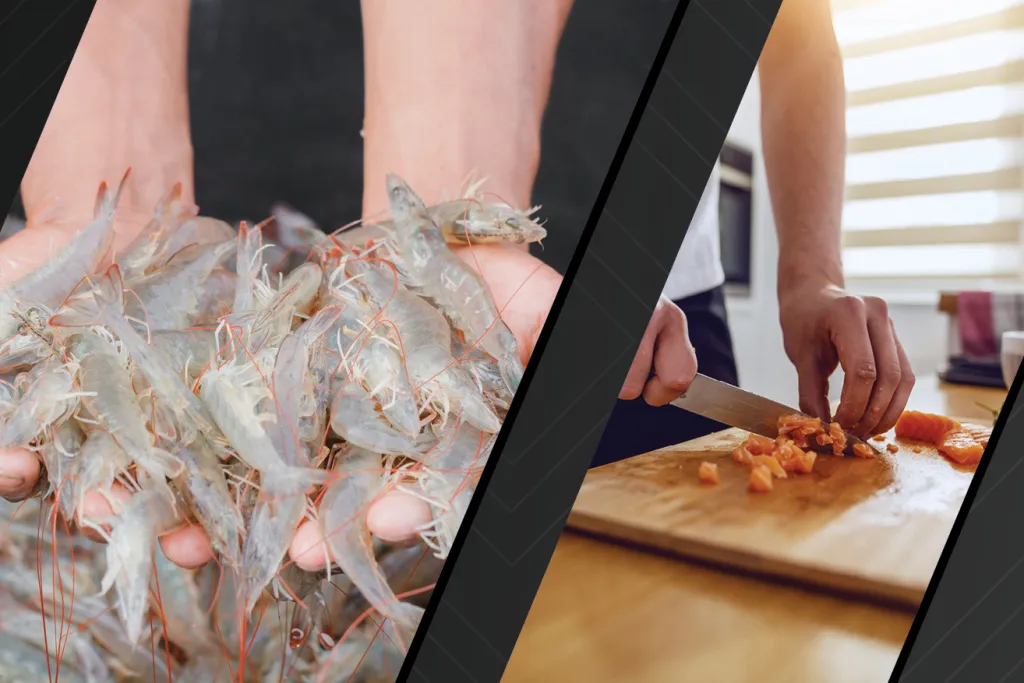Salmon, shrimp, catfish and other fish provide a significant source of protein, economic activity and recreation, but the nation’s fisheries and aquaculture industries face numerous challenges.
- climate change, hurricanes, oil spills and other environmental shocks
- growing demand for recreational fishing and seafood
- changing consumer preferences
- competition from imported seafood
- aging marinas and other infrastructure
- changes in the supply chain
- price fluctuations
- sustainability
Tim Sullivan, a national program leader with USDA’s National Institute of Food and Agriculture (NIFA), said these challenges have led to economic stress and uncertainty for aquaculture and fisheries in the United States.
“Fisheries and aquaculture are a bedrock of economics for communities throughout the United States,” said Sullivan. “These producers provide vital contributions to food security through the production of healthy animal protein, but they need help to better understand markets and how to improve production efficiency in an environmentally sustainable and socially responsible way.”
Through a multi-state grant funded by NIFA, researchers at 13 Land-grant Universities have been investigating these problems and searching for answers for the last several years. Scientists from the following institutions are studying management, trade and marketing issues in the aquaculture and fishery industries:
- University of Alaska Fairbanks
- Auburn University
- Clemson University
- University of Connecticut
- University of Florida
- University of Guam
- University of Idaho
- Iowa State University
- Louisiana State University
- Mississippi State University
- Purdue University
- University of Rhode Island
- Virginia Tech University
Specifically, researchers at these universities studied ways to enhance and sustain fishery and aquaculture production; increase organizational and institutional efficiency within the industries; and expand seafood markets and increase value.
“The broad breadth of research conducted by this multistate program, tackling critical issues in biological and social sciences, serves to position these sectors, communities, and stakeholders for both profitability and sustainability now and into the future,” Sullivan said.
Research Highlights
New Markets for Fish
- Explored the potential to market Alaska seafood to local school cafeterias.
- Led chefs on tours of Indiana aquaculture operations, increasing use of local products in restaurants.
- Taught fishermen and consumers in the U.S. Virgin Islands how to catch, handle and cook lionfish, an invasive species impairing reef systems and the supply of other fish.
Fish Labeling
- Analyzed consumers’ reactions to health risk information (like mercury levels) in comparison to health benefit information (such as omega-3 content).
- Studied consumers’ willingness to pay higher prices for local products and products with certifications or labels and whether fishermen benefit from price premiums.
- Examined consumers’ acceptance of genetically modified seafood and predicted the effects of a proposed labeling policy for genetically modified fish.
Managing Fisheries and Aquaculture
- Provided critical information for forecasting and managing fish stocks.
- Advanced methods and models used to analyze fisheries and fishery management.
- Examined the benefits and challenges of different fishery management and conservation approaches.
- Found ways to improve cost-effectiveness of fisheries and aquaculture systems.
Lower Cost Feed for Farmed Fish
- Evaluated cost reductions of replacing feed ingredients with enriched soybean meals.
- Analyzed innovation in precision feeding by using microphones to detect shrimp feeding noises to allow producers to feed shrimp until they stop, resulting in better feed utilization and larger, higher-value shrimp than manual or timed feeding.
Aquaponics
- Studied the effectiveness of various aquaponic systems where fish waste and uneaten feed provide nutrients for plant growth.
- Workshops educated aquaponics practitioners on system types, fish and plant combinations, pest control, economics, marketing and food safety.
Fish Safety and Quality
- Identified and compared ways to reduce odors and off-flavors in channel catfish.
- Examined ways oyster farmers can shield themselves from adverse impacts when a neighboring farm is linked to a foodborne illness outbreak.
- Estimated the socioeconomic impacts of aquatic diseases and remediation, justifying government programs and regulations.
Fishing and the Environment
- Studied the impacts of the Deepwater Horizon oil spill on commercial and recreational fishing in the Gulf of Mexico (e.g., among Mississippi businesses, sales dropped 50% and employment declined 33% from the previous year).
- Studied environmental issues related to capture fisheries, including invasive species, ecosystem services and stocking programs designed to satisfy demand for recreational fishing.
Top image: Left image of hands holding shrimp. Right image of salmon cut up on wood cutting board. Images courtesy of Adobe Stock.

